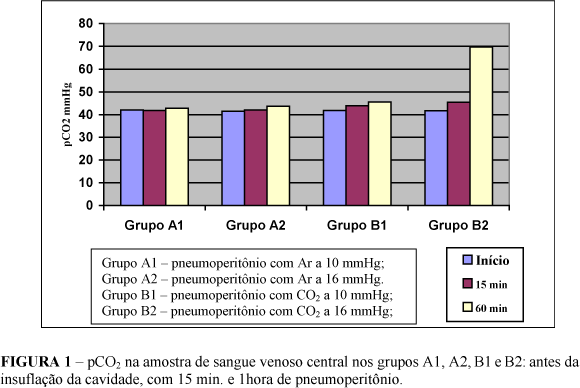PURPOSE: The pneumoperitoneum causes several physiological alterations in humans. Some of these alterations, as hypercapnia and acidosis, are dependent on the use of CO2 or aggravated by its use, and affects mainly the patients with cardiopulmonary problems. The need for a better alternative of cavity insufflation; the observation that open surgeries, as well as the laparoscopic surgeries with mechanical lifting devices are performed in the presence of environmental air; and the shortage of studies investigating the air insufflation as an alternative to CO2 cavity insufflation, were the reasons for carrying out the present work. METHODS: Twenty pigs under anesthesia were submitted to pneumoperitoneum in an hour procedure. The animals were divided in 4 groups of 5 animals: A1 Group - Air Pneumoperitoneum at 10 mmHg; A2 Group - Air Pneumoperitoneum at 16 mmHg; B1 Group - CO2 Pneumoperitoneum at 10 mmHg; B2 Group - CO2 Pneumoperitoneum at 16 mmHg. The pneumoperitoneum was performed by open technique using Hasson trocar. Through a central venous blood catheter, venous blood was collected three times to gas analysis. RESULTS: The blood gas analysis didn't show significant changes related to PaO2 and O2 saturation among the groups. In the Groups A1, A2 and B1, changes related to the acid-basic balance were not observed. In the Group B2 there was a clear tendency to hypercapnia and acidosis after an hour of pneumoperitoneum procedure. CONCLUSION: The air was a safe option for cavity insufflation during diagnostic laparoscopic procedures in swine.
Pneumoperitoneum; Blood gas analysis; Laparoscopy; Swine; Air


